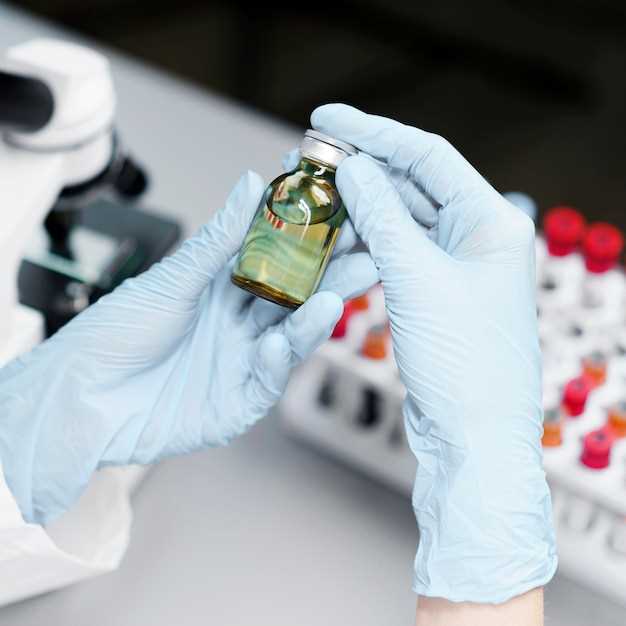
Losartan is a widely used medication known for its effectiveness in treating high blood pressure and kidney problems. Understanding the pharmacokinetics and pharmacodynamics of Losartan is essential for maximizing its benefits.
Overview of Losartan
Losartan is a medication commonly used to treat high blood pressure (hypertension) and to protect the kidneys in patients with type 2 diabetes. It belongs to a class of drugs known as angiotensin II receptor blockers (ARBs), which work by blocking the action of angiotensin, a substance in the body that narrows blood vessels and increases blood pressure.
Losartan is typically taken orally in tablet form and is well-absorbed in the gastrointestinal tract. After absorption, it reaches peak blood levels within about 1 hour.
How Losartan Works
Losartan works by blocking the action of angiotensin II on its receptor, called the AT1 receptor. By blocking this receptor, losartan helps dilate blood vessels, which reduces blood pressure and improves blood flow. This mechanism of action is crucial in managing hypertension and protecting organs, such as the kidneys, from damage due to high blood pressure.
Overall, losartan is a widely used and effective medication for managing high blood pressure and protecting organ function in patients with certain medical conditions.
Pharmacokinetics
Losartan is well absorbed from the gastrointestinal tract, with peak plasma concentrations achieved within 1 hour after oral administration. The bioavailability of losartan is approximately 33%. Food intake does not significantly affect the absorption of losartan.
Losartan is highly bound to plasma proteins (about 99%) and has a volume of distribution of approximately 34 liters. The drug undergoes extensive hepatic metabolism to form the active metabolite, E-3174. The metabolism of losartan is primarily mediated by the cytochrome P450 enzyme CYP2C9.
The elimination half-life of losartan is about 2 hours, while that of its metabolite, E-3174, is approximately 6-9 hours. Both losartan and its metabolite are primarily excreted in the urine, with only a small fraction of the dose excreted unchanged in feces.
The pharmacokinetics of losartan are linear and dose-proportional over the therapeutic dosage range. In patients with impaired hepatic function or renal insufficiency, the pharmacokinetics of losartan may be altered, requiring dosage adjustments.
Absorption of Losartan
Losartan is well absorbed after oral administration, with peak plasma concentrations occurring within 1 to 2 hours. The absolute bioavailability of losartan is about 33%, primarily due to first-pass metabolism in the liver. Food intake does not significantly affect the absorption of losartan, so it can be taken with or without food.
After absorption, losartan undergoes extensive biotransformation in the liver to form its active metabolite, E-3174. This metabolite has a much greater affinity for the angiotensin II type 1 receptor than losartan itself, contributing to the overall pharmacological effects of the drug.
The absorption of losartan is not affected by age, gender, or race, but it may be delayed in individuals with hepatic impairment. Therefore, dosage adjustments may be necessary in patients with severe liver disease to ensure therapeutic efficacy and safety.
In conclusion, the absorption of losartan is rapid and efficient, leading to the generation of its active metabolite responsible for its pharmacological effects. Understanding the absorption kinetics of losartan is essential for optimizing its therapeutic use in the management of hypertension and other cardiovascular conditions.
Distribution of Losartan

Losartan is extensively distributed in the body, with a volume of distribution of approximately 34 liters. It is mainly bound to plasma proteins, primarily albumin, with a binding rate of about 99%. This high protein binding reduces the likelihood of drug interactions and ensures that the majority of the drug remains in the circulation.
Losartan has a relatively low penetration into the central nervous system due to its large molecular size and high protein binding. However, it readily crosses the placental barrier and is excreted in breast milk, so caution is advised when prescribing Losartan to pregnant or nursing women.
Overall, the distribution of Losartan in the body is well-characterized, and its pharmacokinetic properties contribute to its efficacy and safety profile in the treatment of hypertension and other cardiovascular conditions.
Metabolism of Losartan
Losartan is metabolized in the liver to its active metabolite, E-3174, primarily by the cytochrome P450 enzyme CYP2C9. This metabolite is responsible for most of the angiotensin II receptor antagonism produced by losartan. E-3174 has a much greater affinity for the angiotensin II receptor than the parent compound, contributing to its potent antihypertensive effects. The metabolism of losartan is relatively slow, with a half-life of about 2 hours, while the half-life of the active metabolite is longer, approximately 6-9 hours.
Excretion of Losartan
Losartan is primarily excreted in the urine, with approximately 4% of the dose excreted unchanged and about 6% of the dose excreted as the active metabolite. The remaining percentage is excreted as inactive metabolites via the bile, resulting in fecal elimination.
Renal Excretion
The renal excretion of losartan and its metabolites involves both glomerular filtration and active tubular secretion. The active metabolite, E-3174, is also excreted in the urine, contributing to the overall elimination of losartan.
Pharmacodynamics

Losartan is an angiotensin II receptor antagonist that acts to block the vasoconstrictor and aldosterone-secreting effects of angiotensin II. By blocking the binding of angiotensin II to its receptors, Losartan inhibits the renin-angiotensin-aldosterone system (RAAS) and leads to vasodilation, decreased production of aldosterone, and reduced blood pressure.
Losartan selectively targets the AT1 subtype of angiotensin II receptors found in vascular smooth muscle and the adrenal gland. By antagonizing the AT1 receptors, Losartan prevents the downstream effects of angiotensin II, such as vasoconstriction, aldosterone release, and sodium retention.
Mechanism of Action
| Target | Effect |
|---|---|
| AT1 Receptors | Vasodilation |
| Decreased aldosterone secretion | |
| Reduced blood pressure |
Mechanism of Action
Losartan is an angiotensin II receptor antagonist. It works by blocking the action of angiotensin II, a substance in the body that causes blood vessels to constrict, which leads to an increase in blood pressure. By blocking the effects of angiotensin II, losartan helps to relax the blood vessels, lower blood pressure, and improve blood flow.
Additionally, losartan helps to reduce the secretion of aldosterone, a hormone that causes the body to retain sodium and water, leading to increased blood volume and higher blood pressure. By inhibiting aldosterone production, losartan promotes the excretion of sodium and water, further lowering blood pressure.
